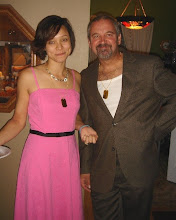

Electrolyte selection: (Upper) The electrolyte arrived and I wasted no time testing. The Winner was the Lithium Hydroxide as far as electrical conductivity goes. However, It was hard to get to go into solution. It beat out the Potassium Hydroxide by only 200 ohms. Here are the results:
Sodium Bicarbonate - 20,000 Ohms
Vinegar - 10,000 Ohms
Sodium Hydroxide - 2500 Ohms
Potassium Hydroxide - 2200 Ohms
Lithium Hydroxide - 2000 Ohms.
You would think with those resistance numbers that Hydroxy would be pouring off the cell. Especially, since I obtained 4/L/M with a smaller cell and Sodium Bicarbonate in full solution. Well, It didn't. Although, at first it looked like Lithium Hydroxide would make a good electrolyte, I do not recommend it. It forms a salt at the bottom of the cell that builds up and shorts out the plates and it will not stay in solution well enough to support good conductivity.
(Lower) Warming up the cell with 36v: I only obtained 2/L/M with 9 amps with the Lithium. That calculates out to be 79% efficient. The strange thing is, after I pulled power from the cell, it kept producing Hydrogen for 10 minutes. So if I had stored and measured that after flow, efficiency would be higher. As it turns out, this is a known phenomenon for Joe Cell technology. With the new Stainless Steel cell and Potassium Hydroxide we will see much better results, I am sure.

No comments:
Post a Comment